On September 29, cowhands rounded up 1,400 bison that roam South Dakota’s 71,000-acre Custer State Park. The roundup of one of the world’s largest public herds of bison drew over 20,000 visitors from around the globe. Listening to America’s Frank Lister, chief scout and new roving correspondent, was also there to witness the rare event.
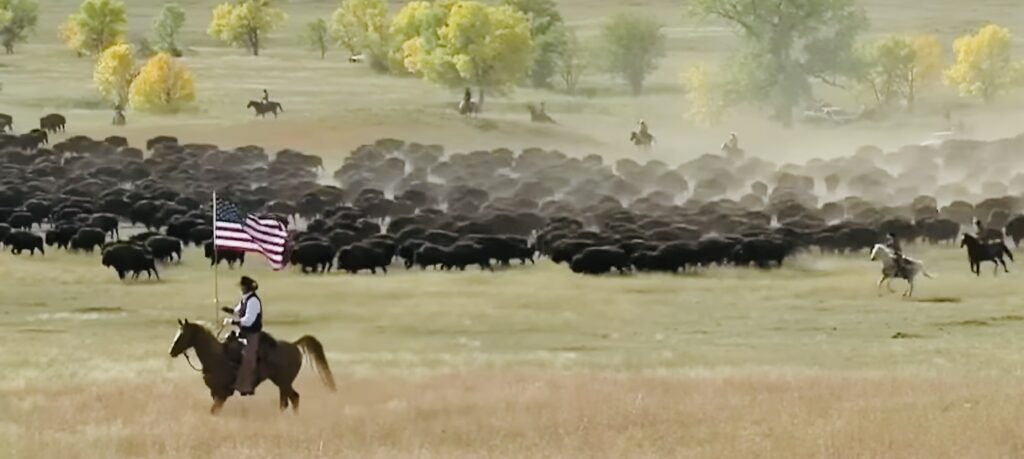
Last spring, I joined up with the Listening to America team when I helped scout their Water in the West project. Due to my deep knowledge and contacts around the Colorado Plateau, we brought together experts to explore the water situation of this drought-stricken region’s past, present, and future. Clay aptly recounted our travels in his early series of dispatches for LTA.
Recently, Clay asked if I would head up to the South Dakota Black Hills and scout a genuinely American event, the annual roundup of nearly 1,400 bison at Custer State Park. The bison and Great Plains are a current focus at LTA in part due to the interest around Ken Burns’ new documentary The American Buffalo, in which Clay is a commentator. I would become the first correspondent for LTA — no pressure there!
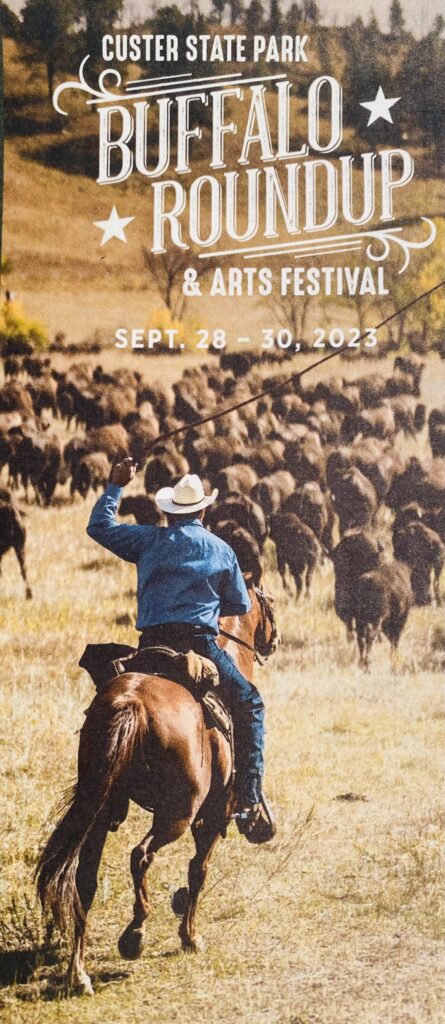
I live in southern Utah, near Bryce Canyon, in one of the most remote places in the continental U.S. The drive to the Black Hills would take me diagonally across Wyoming and cover about 900 miles. Along the way, I visited historic sites, museums, visitor centers, oil fields, and National Grasslands.
I arrived in Keystone, S.D., the day before the roundup. Keystone is three miles from Mt. Rushmore and a busy tourist-driven town full of t-shirt vendors, curio shops, and other tourist-based businesses. I stayed at a local motel and, after checking in, decided to drive into the Custer State Park to get my bearings and see where I should be for the event the following day. The park is massive, over 71,000 acres. It contains rugged hills, densely wooded, with large open meadows. The aspen and cottonwoods are in full fall colors; the country was breathtaking! The park was packed with fall foliage sightseers.
I ended up at the Bison Center and the roundup hub in my wanderings. Here were the numerous corrals that will be used to hold the buffalos while they are inspected by vets, weighed, measured, and vaccinated. The purpose of the roundup is to do a medical check on the herd as well as reduce the resident population from about 1,400 to 1,000 head. The 1,000 number is the optimum carrying capacity for the park’s range-land but still allows forage space for other critters like elk, antelope, and smaller animals. Roughly 400 buffalo will be culled from the herd, auctioned off, sold to the public and tribes, and harvested.
As I arrived at the corrals, I noticed a large group of cowboys and cowgirls under a giant circus tent receiving directions for the next day. Roughly 60 riders will participate in the roundup, divided into three groups.
The Roundup
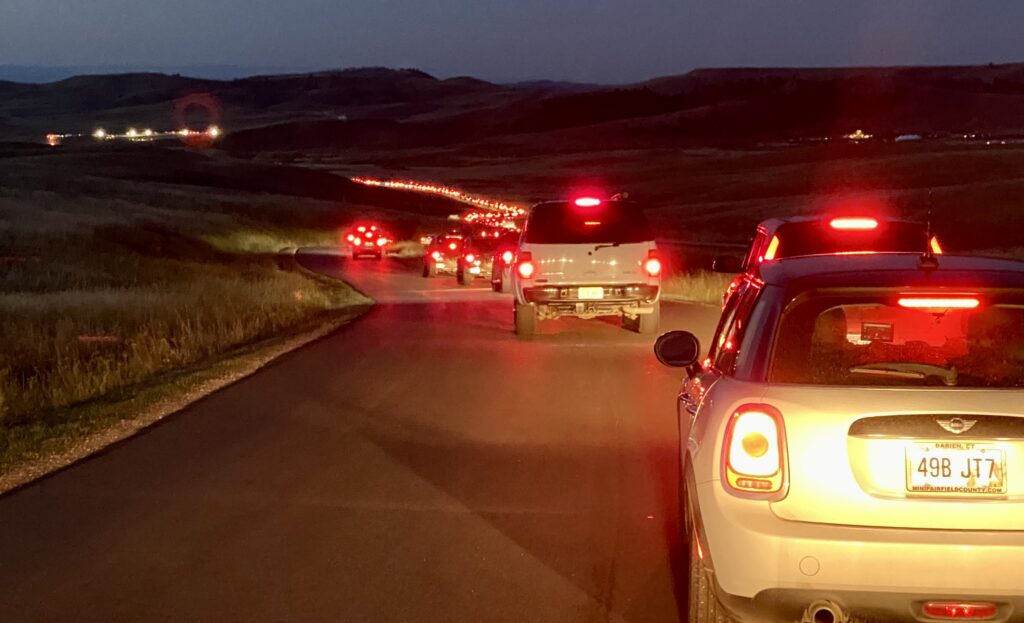
My alarm went off at 4 am! I layered up because it’s fall in the Black Hills, and mornings are chilly. It was still dark when I headed out. As I drove towards Custer State Park, the line of headlights and taillights behind and in front of me grew longer and longer. By the time I reached the park’s interior, the line of visitors going to the roundup was miles long. And then we all stopped! The gates to the parking areas would not open until around 6 am. We all sat in our vehicles for nearly an hour. Fortunately, we were all under a huge full moon. It lit up the landscape as it traveled across the sky above us. It was beautiful!
When I finally reached the north viewing area, I along with hundreds of other cars, was ushered into a massive hillside parking area. Thousands of roundup watchers were already there. Park volunteers had set up a large tent near the overlook, and to the crowd’s delight, were serving a pancake and sausage breakfast. And, of course, there were dozens of port-a-potties. Ultimately, the gathering would swell to over 20,000 folks with 20,000 lawn chairs.
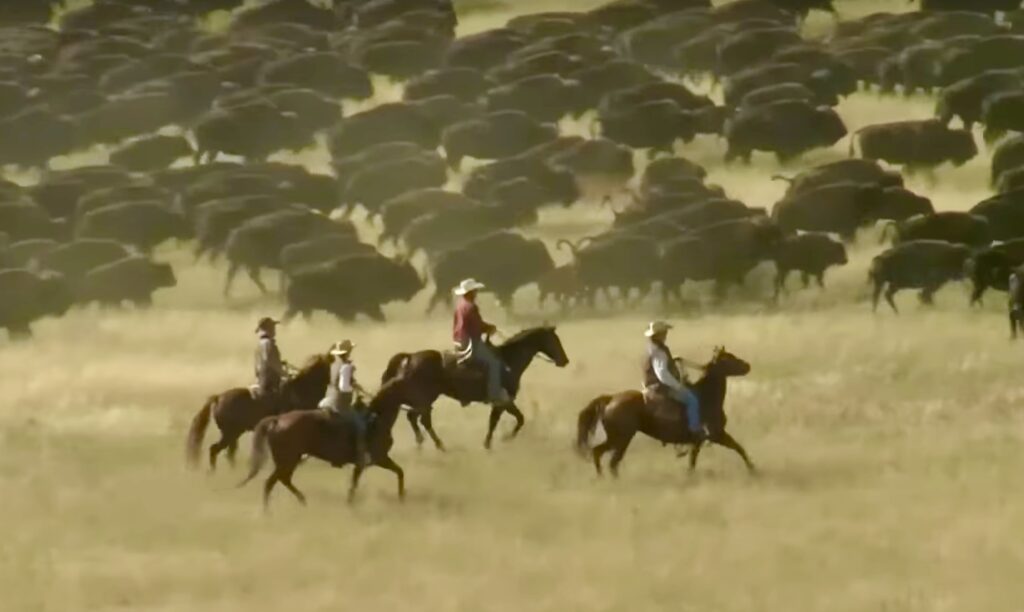
At about 10 am, a black swarm of buffalo came into view over a ridge several miles away. It grew slowly and went out of sight into a ravine that separated us. I couldn’t help but think of what it was like for Native American scouts to witness such a herd in the distance. The buffalo were life to them. Soon, the herd came into full view as it approached the thousands of roundup enthusiasts sitting on a south-facing hillside. Dust was hanging over the massive group as they came our way. A 6-foot high steel fence stood between us and the oncoming buffalo.
The wranglers herded the 1,400 buffalo, cows, calves, and young bulls in front of the 20,000 onlookers. They didn’t bring along the older bulls. They are problematic to herd, don’t need to be vaccinated annually, and tend to go wherever they want, regardless of what a cowboy might desire. The cowhands hooted, hollered, and popped their bullwhips as they drove the herd toward giant corrals where they would remain for several days while a team of South Dakota Fish and Game veterinarians checked them out. It was quite an occasion to see and hear.
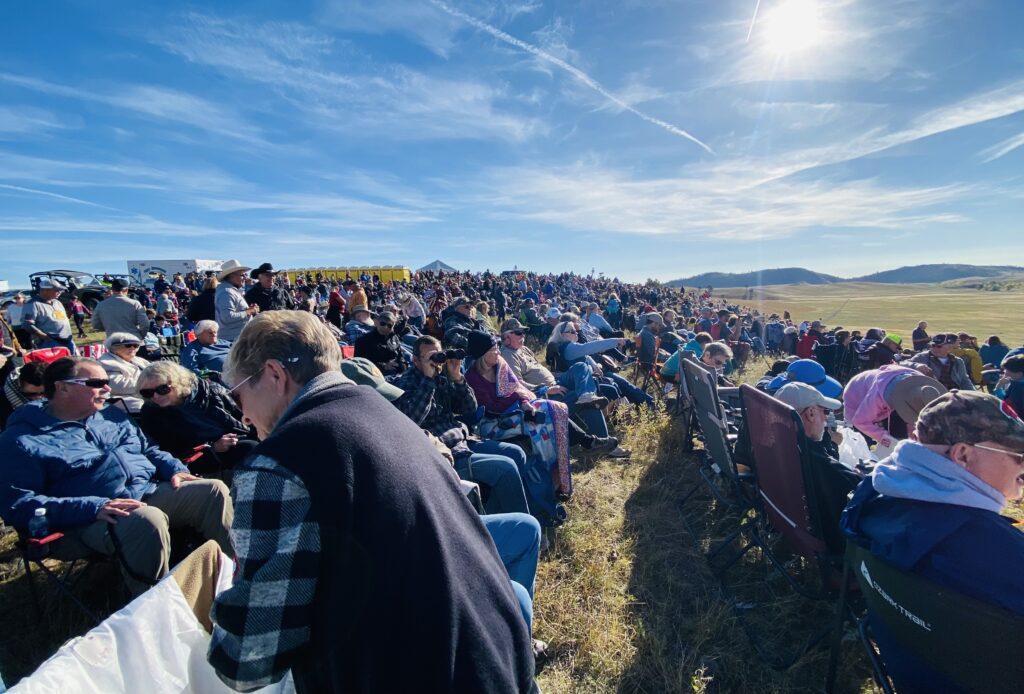
When the roundup was over and the bison were enclosed in the corrals, the fun began: getting out of there! I decided to walk the couple of miles to the corrals rather than face miles of slow-moving vehicles. I had a choice to wait and catch a bus to the corrals or walk. I chose to walk; it was a beautiful sunny day, and the cottonwoods along the route were at maximum fall brilliance.
The corral area was a mob scene. Everyone wanted a close-up view of these iconic creatures. Having worked on ranches and been around livestock for many years, I realized these bison are domesticated. Sure, they are wild animals, but they are familiar with humans. However, they are massive; the bulls can weigh over 2,000 pounds, and cows can weigh over 1,000 pounds. They can also move fast, clocking in at speeds of 35 mph. The wooden corrals consisted of long, connected narrow chutes. The animals were herded from pen to pen by a tractor with a large steel shield on the front of it. This is a sign that it is too dangerous for cowboys on horseback to work the buffalo in such a small, enclosed area.
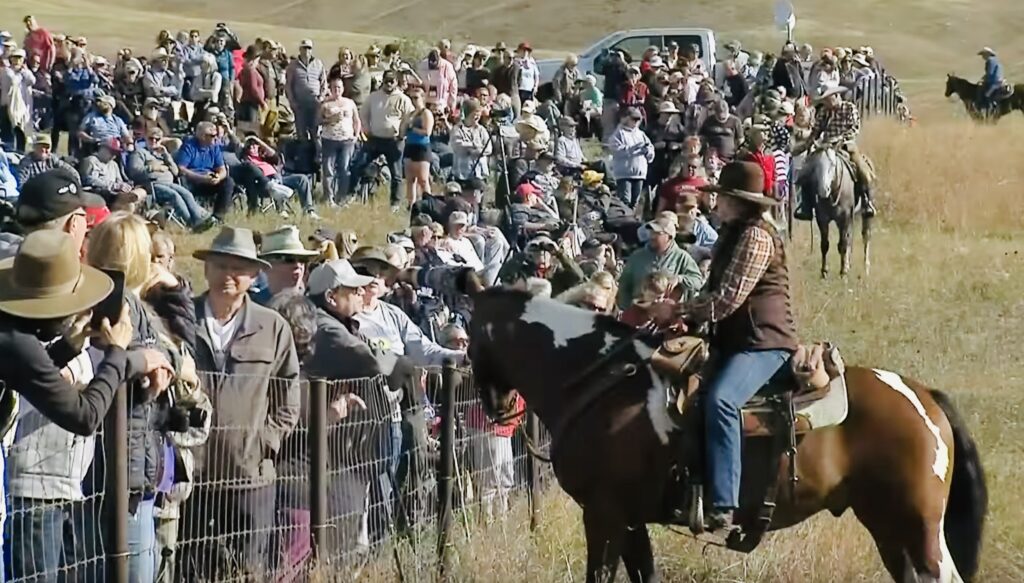
I left the roundup with an appreciation for the vast number of volunteers and staff of the South Dakota State Parks Department it takes to pull off such an event. After more than 50 years of running the roundup, they have it together. And, of course, the main attraction was the buffalo herd — healthy and well cared for. Custer State Park is a “must-visit” park. The Civilian Conservation Corps constructed the infrastructure of roads, bridges, and many buildings in the 1930s. Their legacy of fine craftsmanship adds to the overall quality of the park.
You can watch a recorded livestream of the Custer State Park 58th Annual Buffalo Roundup from South Dakota Public Broadcasting here.
